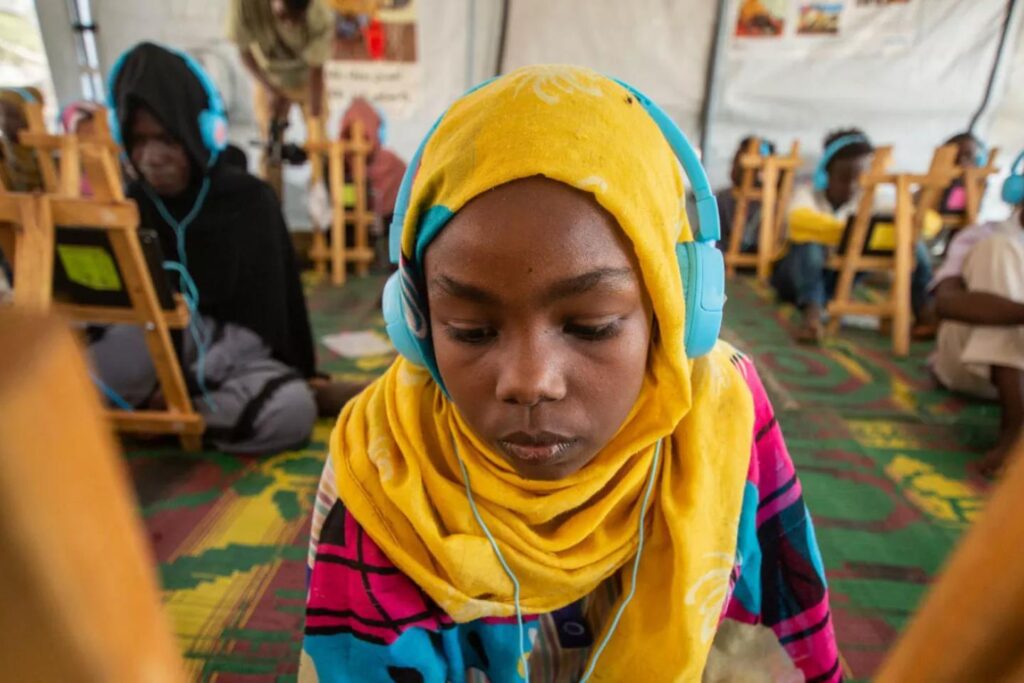Sudan is at a devastating crossroads. As April 2025 marks the second anniversary of the brutal civil war between the Sudanese Armed Forces (SAF) and the Rapid Support Forces (RSF), the country faces what the United Nations now calls the worst humanitarian crisis on the planet. With nearly 25 million people in dire need of aid, access constraints, conflict-driven famine, and the systematic collapse of infrastructure have plunged millions into a survival battle like never before. The April 2025 snapshot of humanitarian access paints a grim yet urgent picture of what lies ahead—and what needs to be done.
Two Years of War and Worsening Access
Since the outbreak of war in April 2023, the conflict between the SAF and RSF has spread across major regions including Khartoum, Darfur, Kordofan, and parts of eastern Sudan. The fighting has been marked by urban sieges, airstrikes, mass displacement, and grave violations of human rights. While the war itself has taken thousands of lives, the indirect consequences—food shortages, destruction of healthcare systems, and disruption of water and sanitation—are killing silently and in greater numbers.
In April 2025, access to many conflict-affected regions remains severely restricted. Humanitarian corridors are either unsafe or non-existent, with aid convoys frequently looted, blocked, or targeted by armed groups. The RSF has particularly been implicated in preventing access to civilians in regions like North Darfur, where the famine is most severe. UN agencies report that only 10–15% of humanitarian requests for access are currently being approved or implemented successfully, a major drop compared to early 2024.

Zamzam Camp: A Symbol of Systematic Starvation
Perhaps no place represents the unfolding disaster more than the Zamzam camp in North Darfur. Once home to over half a million internally displaced people, it has become an epicenter of forced starvation, violence, and systemic failure. In April 2025, famine was officially declared in the region. According to local health workers and NGOs, one child dies every two hours due to starvation or preventable disease in Zamzam. The RSF has been accused of blockading access to the camp, targeting aid workers, and carrying out mass displacement by burning shelters and looting food supplies.
The situation is compounded by complete breakdowns in communication and security. Aid organizations have been unable to conduct routine nutritional surveys or even bury the dead with dignity. The camp, which once offered a lifeline for displaced people, now resembles a wasteland of despair, hunger, and fear.

The Struggle for Safe Humanitarian Corridors
Efforts by international organizations to secure humanitarian corridors through ceasefires or negotiated access have yielded little progress. Attempts by the UN Office for the Coordination of Humanitarian Affairs (OCHA) to work with both the SAF and RSF have met with mistrust, delays, and outright rejection. In some cases, aid convoys were allowed to proceed, only to be attacked en route by militias or looted upon arrival.
The SAF continues to maintain blockades around parts of Khartoum and Omdurman, accusing aid agencies of covertly assisting RSF-held territories. Meanwhile, the RSF is reported to have established its own checkpoints, charging “tolls” for aid deliveries and using humanitarian goods for political leverage. The result is a humanitarian system choked by bureaucracy, insecurity, and political interference.
Infrastructure and Health System Collapse
Sudan’s already fragile health and water infrastructure has crumbled under the weight of war. More than 70% of health facilities are non-functional, with many completely destroyed or occupied by armed groups. Hospitals in major cities like Khartoum, El Fasher, and Nyala have been bombed or abandoned. The World Health Organization reports a shortage of essential medicines, surgical supplies, and fuel needed to power remaining hospitals.
Drone and airstrike attacks in April 2025 damaged water facilities in Gezira and White Nile states, putting over 3 million people at risk of waterborne diseases. Cholera, dengue, and measles outbreaks have been reported in IDP camps, particularly those with poor sanitation.
Healthcare workers are also under direct threat. There have been multiple reports of abductions, harassment, and even targeted killings of doctors and nurses in conflict zones. As a result, many health professionals have fled, leaving behind understaffed clinics struggling to care for thousands.
A Displacement Crisis Without Precedent
The scale of displacement in Sudan is staggering. By April 2025, more than 12 million people have been displaced from their homes, making it one of the largest displacement crises in the world today. Of these, nearly 8 million are internally displaced, while 4 million have fled to neighboring countries such as Chad, South Sudan, Ethiopia, and Egypt.
Camps like Zamzam and Abu Shouk, once viewed as sanctuaries, have become targets themselves. In April, the RSF reportedly forced hundreds of thousands to flee Zamzam by burning tents and attacking civilians. Many IDPs are now hiding in forests, mountains, or unrecognized shelters with no access to food, clean water, or medical aid.
The pressure on Sudan’s neighbors is also growing. Refugee camps in Chad and South Sudan are overcrowded, underfunded, and lack the capacity to manage continuous inflows. Cross-border humanitarian access remains inconsistent, with many refugees facing harassment or deportation.
Food Insecurity and Funding Gaps
Famine is no longer a looming threat—it is already killing people across multiple regions. According to the Integrated Food Security Phase Classification (IPC), parts of Darfur and Kordofan are now classified as Phase 5 (famine), with millions more in Phase 4 (emergency). The World Food Programme (WFP) warns that without immediate scale-up of aid, nearly 5 million more could fall into famine by mid-2025.
Despite the urgent need, humanitarian funding is at an all-time low. The WFP announced in April that it faces a funding gap of $698 million to support its operations in Sudan. Ration sizes have been slashed, and food distributions have been suspended in high-risk areas. In some parts of Sudan, people have not received any food aid since December 2024.
Digital cash assistance, once a key strategy in conflict-sensitive regions, has also been suspended in areas with poor connectivity or banking infrastructure. Inflation and supply chain disruptions have made even the most basic food items unaffordable for average households.
Global Appeals and Diplomatic Challenges
The international response to Sudan’s humanitarian crisis has been underwhelming. While donor countries acknowledge the severity of the crisis, actual financial contributions remain insufficient. The war in Ukraine, conflict in Gaza, and global economic instability have diverted attention and resources away from Sudan.
Humanitarian organizations continue to urge the international community to prioritize Sudan, calling for diplomatic pressure on both warring factions to allow unimpeded access. Several UN Security Council meetings in April 2025 discussed the crisis, but no binding resolution has emerged due to geopolitical divisions.
Meanwhile, local organizations and Sudanese civil society are doing everything in their power to fill the gaps, often at great personal risk. Many rely on informal networks to smuggle in supplies or provide underground medical care. Their bravery is a testament to the resilience of the Sudanese people amid unimaginable adversity.
The Road Ahead: What Needs to Happen
April 2025 stands as a pivotal moment. Without immediate action, the death toll in Sudan could rise dramatically over the next six months. The world must act now to prevent further loss of life. Key priorities include:
- Unconditional humanitarian access: All parties must guarantee safe, sustained access for aid agencies to reach those in need.
- Massive funding mobilization: Donor countries and institutions must close the WFP and WHO funding gaps immediately.
- Protection of civilians and aid workers: All factions must adhere to international humanitarian law.
- Regional cooperation: Neighboring countries must support refugee flows with dignity and ensure access to cross-border humanitarian delivery.
- Long-term peace process: International diplomacy must revive meaningful negotiations between SAF and RSF to end the war.
The crisis in Sudan is not just a national tragedy—it is a global failure of humanity. But it is not irreversible. With coordinated, courageous action, millions of lives can still be saved. The time to act is not tomorrow. It is now.
Do follow Uae stories for more Updates
Indian-Origin Man Wins ₹8.3 Crore in Dubai After 15 Years of Trying: ‘I Couldn’t Even Respond’














